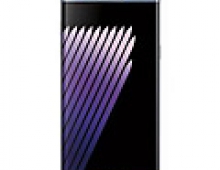
Samsung Announces Cause of Galaxy Note7 Incidents, Shares Quality Assurance Measures
Following several months of investigations, Samsung Electronics today announced the cause of the Note7 incidents and measures to prevent a recurrence during a press conference held in Seoul.
DJ Koh, President of Mobile Communications Business, Samsung Electronics, was joined by executives from UL, Exponent and TUV Rheinland, independent industry groups that conducted their own investigation into various aspects of the Galaxy Note7 incidents.
Samsung's investigation, as well as the investigations completed by three independent industry organizations, concluded that the batteries were the cause of the Galaxy Note7 incidents.
Samsung said that a small curcuit within the battery may occur when there is damage to the separator that allows the positive and negative electrodes to meet the jellyroll. Based on analysis of the affectd batteries, both Battery A from the 1st recall and Battery B from the 2nd recall, Samsung identified sperate factors originated in and were specific to the two different batteries.
Samsung did not name the suppliers on Monday but previously identified them as affiliate Samsung SDI Co Ltd and China's Amperex Technology Ltd (ATL). SDI said separately it would invest 150 billion won ($129 million) to improve product safety and expected to continue supplying batteries for Samsung phones. ATL declined to comment.
The causative factors are further explained below:

Based on what the company learned from the investigation, Samsung implemented a broad range of internal quality and safety processes to further enhance product safety including additional protocols such as the multi-layer safety measures and 8-Point Battery Safety Check. Samsung also formed a Battery Advisory Group of external advisers, academic and research experts to ensure it maintains am objective perspective on battery safety and innovation.
- Samsung's enhanced 8-Point Battery Safety Check addresses safety from the component level to the assembly and shipment of devices. Included in the check are enhanced tests (Durability Test, Visual Inspection, X-Ray Test, Disassembling Test and △OCT Test), as well as newly applied measures (Charge and Discharge Test, TVOC Test and Accelerated Usage Test).
- Samsung's enhanced multi-layer safety measures protocol will implement strict safety standards on every element of the company's devices including the overall design and materials used, device hardware strength and capabilities, and improved software algorithms for safer battery charging temperature, current and duration.
Samsung also confirmed that its next Galaxy s8 flagship smartphone would not be unveiled at the Mobile World Congress trade show in Barcelona beginning Feb. 27, the traditional forum for Galaxy S series launches. He did not comment on when the company planned to launch the handset, though analysts expect it to start selling by April.





















